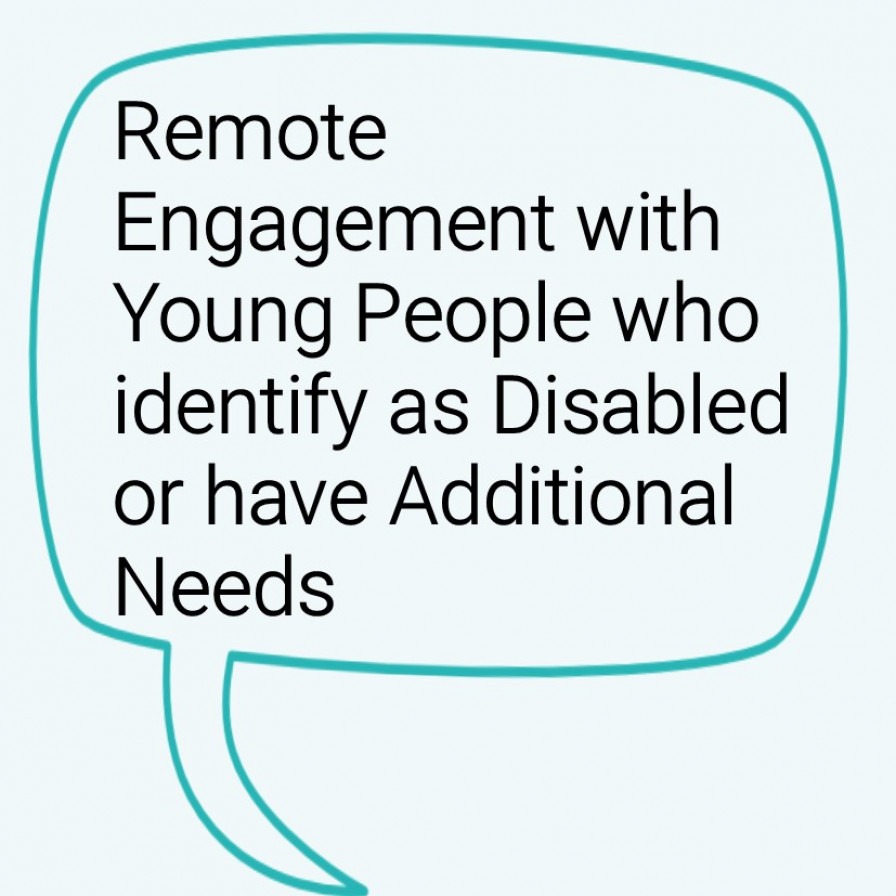You are here:
Music Leader Exchange: Remote Engagement with Children and Young People who Identify as Disabled

This Music Leader Exchange session, was facilitated by Kris Halpin, who shared his thoughts and experiences of music making with young people with additional needs over Zoom.
Social Model of Disability
This is a framework that recognises that people are disabled by society and not by their medical condition. This can be very empowering.
Aesthetics of Access
- Access should not be an afterthought, but embedded in the delivery of a project from the beginning and it should be considered stylistically.
- There should be no hierarchy in terms of ability. Whatever sounds anyone makes is completely valid and sessions are all about embracing whatever a person does.
- Record the sounds that people make, take segments and loop them.
- There is so much exciting music making that can happen once you get outside of the expectations of musicality.
Embrace how impairment can inform musicianship
Start with the Basics
- Make sure you’re sitting comfortably
- Getting your lighting right can transform sessions
- Stop thinking of online engagement as a temporary replacement for in-person band rehearsals
Making the Most of Technology for Online Band Sessions
- Everything really hangs on the quality of the internet connection, so don’t get too hung up on sound quality or things you can’t control. Embrace the experimental nature of this way of making music.
- Forget about latency issues. Record sounds in to your DAW and layer them up to create tracks.
- Virtual Choir Recorder is a great app for recording and layering sounds, not just vocals.
- Start with a drum beat on MUSICAA. Participants can make their own beat or copy a beat and copy and paste the URL in to the chat. This way the music leader can record participants’ beats in to the DAW nice and crisply.
- If you don’t have an audio interface, you can create a loopback by setting Zoom as your audio input on Logic/Garageband/Ableton.
- RD4 is an app you can use on an android device if you don’t have an ipad.
How do Songs get Written?
- Use numbers to choose chords
- Take a famous riff and swap it around to make something new
- Use the whiteboard feature and word association to create lyric ideas
- Use visual art as inspiration for a new song
- Use web apps and set tasks for participants to make a beat or a melody and come back and share
- Create playlists to give participants an opportunity to share the music they like and learn from each other.
- Don’t be too outcome driven. Make sessions more social when they’re online.
Just focus on coming together and being creative as a group. My role as music leader is to foster the participants’ musical identities and help them express themselves.
Working Online Affects People in Different Ways
- Make a short video to introduce yourself and show participants what to expect at the beginning of a project.
- Some people prefer to have their camera off, but this can make it difficult to know if they are engaged. Try setting them individual tasks so they can work independently and but still have the opportunity to share with the group at the end of a session without being put on the spot.
- The chat function can be helpful but also distracting. Invite participants to use it if they would like to, but make sure your settings allow participants to send messages to the whole group and not privately to each other.
Reflection
- Record your thoughts and feelings immediately after a session, preferably using audio so you can capture your own enthusiasm of what worked well and what you learned.

